-
EXECUTIVE SUMMARY
-
GLOBAL PACKAGING MATERIAL MARKET, BY MATERIAL
-
GLOBAL PACKAGING MATERIAL MARKET, BY PRODUCT
-
GLOBAL PACKAGING MATERIAL MARKET, BY LEVEL OF PACKAGING
-
GLOBAL PACKAGING MATERIAL MARKET, BY END USE INDUSTRY
-
MARKET INTRODUCTION
-
DEFINITION
-
SCOPE OF THE STUDY
-
RESEARCH OBJECTIVE
-
MARKET STRUCTURE
-
KEY BUYING CRITERIA
-
RESEARCH METHODOLOGY
-
RESEARCH PROCESS
-
PRIMARY RESEARCH
-
SECONDARY RESEARCH
-
MARKET SIZE ESTIMATION
-
TOP-DOWN AND BOTTOM-UP APPROACH
-
FORECAST MODEL
-
LIST OF ASSUMPTIONS
-
MARKET DYNAMICS
-
INTRODUCTION
-
DRIVERS:
- THE RISING DEMAND FOR PACKAGING SOLUTIONS IS BEING DRIVEN BY THE GROWTH OF EMERGING MARKETS IN DEVELOPING REGIONS
- THE GROWING EMPHASIS ON SUSTAINABILITY AND ENVIRONMENTALLY RESPONSIBLE PACKAGING SOLUTIONS IS FUELING THE EXPANSION OF THE PACKAGING MATERIAL INDUSTRY
-
MARKET RESTRAIN:
- SHORTAGE OF SKILLED LABOURS POSSES AS MARKET CHALLENGES
- IMPLEMENTING ANTI-COUNTERFEITING MEASURES WITHIN THE PACKAGING INDUSTRY CAN ENTAIL SUBSTANTIAL COST-RELATED HURDLES, THEREBY POSING A LIMITATION ON THE MARKET'S GROWTH POTENTIAL
-
OPPORTUNITY
- CONSUMERS ARE INCREASINGLY SEEKING PERSONALIZED AND CUSTOMIZED EXPERIENCES TOWARDS PACKING PRODUCTS
-
COVID-19 IMPACT ANALYSIS
- IMPACT ANALYSIS OF COVID 19 ON PACKAGING MATERIAL MARKET
- IMPACT ON OVERALL INDUSTRY
-
IMPACT ON THE SUPPLY CHAIN OF PACKAGING MATERIAL
-
IMPACT ON MARKET DEMAND
- IMPACT DUE TO RESTRICTION/LOCKDOWNS
- CONSUMER SENTIMENTS
- IMPACT ON PRICING
-
MARKET FACTOR ANALYSIS
-
SUPPLY CHAIN ANALYSIS
- RAW MATERIAL SUPPLY
- MANUFACTURE & ASSEMBLY
- SALES & DISTRIBUTION
- END USE
-
PORTER’S FIVE FORCE MODLE
- THREAT OF NEW ENTRY:
- BARGAINING POWER OF SUPPLIER:
- THREAT OF SUBSTITUTES
- BARGAINING POWER OF BUYERS
- INTENSITY OF RIVALRY
-
GLOBAL PACKAGING MATERIAL MARKET, BY MATERIAL
-
OVERVIEW
-
PAPER AND PAPERBOARD
-
RIGID PLASTICS
-
METAL
-
FLEXIBLE PLASTICS
-
GLASS
-
WOOD
-
OTHERS
-
GLOBAL PACKAGING MATERIAL MARKET, BY PRODUCT
-
OVERVIEW
-
CONTAINERS AND JARS
-
BAGS AND SACKS
-
POUCHES
-
CLOSURES AND LIDS
-
FILMS AND WRAPS
-
DRUMS & IBCS
-
BOXES & CARTONS
-
CRATES AND PALLETS
-
OTHERS
-
GLOBAL PACKAGING MATERIAL MARKET, BY LEVEL OF PACKAGING
-
OVERVIEW
-
PRIMARY PACKAGING
-
SECONDARY PACKAGING
-
TERTIARY PACKAGING
-
GLOBAL PACKAGING MATERIAL MARKET, BY END USE INDUSTRY
-
OVERVIEW
-
FOOD & BEVERAGES
-
PHARMACEUTICALS AND HEALTHCARE
-
PERSONAL CARE AND COSMETICS
-
AUTOMOTIVE
-
ELECTRICAL AND ELECTRONICS
-
CHEMICALS
-
HOUSEHOLD PRODUCTS
-
OTHERS
-
GLOBAL PACKAGING MATERIAL MARKET, BY REGION
-
OVERVIEW
- GLOBAL PACKAGING MATERIAL MARKET, BY REGION, 2018–2030
-
NORTH AMERICA
- NORTH AMERICA: PACKAGING MATERIAL MARKET, BY COUNTRY, 2018–2030
- NORTH AMERICA: PACKAGING MATERIAL MARKET, BY MATERIAL, 2018–2030
- NORTH AMERICA: PACKAGING MATERIAL MARKET, BY PRODUCT, 2018–2030
- NORTH AMERICA: PACKAGING MATERIAL MARKET, BY LEVEL OF PACKAGING, 2018–2030
- NORTH AMERICA: PACKAGING MATERIAL MARKET, BY END USE INDUSTRY, 2018–2030
- USA: PACKAGING MATERIAL MARKET, BY MATERIAL, 2018–2030
- USA: PACKAGING MATERIAL MARKET, BY PRODUCT, 2018–2030
- USA: PACKAGING MATERIAL MARKET, BY LEVEL OF PACKAGING, 2018–2030
- USA: PACKAGING MATERIAL MARKET, BY END USE INDUSTRY, 2018–2030
- CANADA: PACKAGING MATERIAL MARKET, BY MATERIAL, 2018–2030
- CANADA: PACKAGING MATERIAL MARKET, BY PRODUCT, 2018–2030
- CANADA: PACKAGING MATERIAL MARKET, BY LEVEL OF PACKAGING, 2018–2030
- CANADA: PACKAGING MATERIAL MARKET, BY END USE INDUSTRY, 2018–2030
- MEXICO: PACKAGING MATERIAL MARKET, BY MATERIAL, 2018–2030
- MEXICO: PACKAGING MATERIAL MARKET, BY PRODUCT, 2018–2030
- MEXICO: PACKAGING MATERIAL MARKET, BY LEVEL OF PACKAGING, 2018–2030
- MEXICO: PACKAGING MATERIAL MARKET, BY END USE INDUSTRY, 2018–2030
-
SOUTH AMERICA
- SOUTH AMERICA: PACKAGING MATERIAL MARKET, BY COUNTRY, 2018–2030
- SOUTH AMERICA: PACKAGING MATERIAL MARKET, BY MATERIAL, 2018–2030
- SOUTH AMERICA: PACKAGING MATERIAL MARKET, BY PRODUCT, 2018–2030
- SOUTH AMERICA: PACKAGING MATERIAL MARKET, BY LEVEL OF PACKAGING, 2018–2030
- SOUTH AMERICA: PACKAGING MATERIAL MARKET, BY END USE INDUSTRY, 2018–2030
- BRAZIL: PACKAGING MATERIAL MARKET, BY MATERIAL, 2018–2030
- BRAZIL: PACKAGING MATERIAL MARKET, BY PRODUCT, 2018–2030
- BRAZIL: PACKAGING MATERIAL MARKET, BY LEVEL OF PACKAGING, 2018–2030
- BRAZIL: PACKAGING MATERIAL MARKET, BY END USE INDUSTRY, 2018–2030
- ARGENTINA: PACKAGING MATERIAL MARKET, BY MATERIAL, 2018–2030
- ARGENTINA: PACKAGING MATERIAL MARKET, BY PRODUCT, 2018–2030
- ARGENTINA: PACKAGING MATERIAL MARKET, BY LEVEL OF PACKAGING, 2018–2030
- ARGENTINA: PACKAGING MATERIAL MARKET, BY END USE INDUSTRY, 2018–2030
- REST OF SA: PACKAGING MATERIAL MARKET, BY MATERIAL, 2018–2030
- REST OF SA: PACKAGING MATERIAL MARKET, BY PRODUCT, 2018–2030
- REST OF SA: PACKAGING MATERIAL MARKET, BY LEVEL OF PACKAGING, 2018–2030
- REST OF SA: PACKAGING MATERIAL MARKET, BY END USE INDUSTRY, 2018–2030
-
EUROPE
- EUROPE: PACKAGING MATERIAL MARKET, BY COUNTRY, 2018–2030
- EUROPE: PACKAGING MATERIAL MARKET, BY MATERIAL, 2018–2030
- EUROPE: PACKAGING MATERIAL MARKET, BY PRODUCT, 2018–2030
- EUROPE: PACKAGING MATERIAL MARKET, BY LEVEL OF PACKAGING, 2018–2030
- EUROPE: PACKAGING MATERIAL MARKET, BY END USE INDUSTRY, 2018–2030
- GERMANY: PACKAGING MATERIAL MARKET, BY MATERIAL, 2018–2030
- GERMANY: PACKAGING MATERIAL MARKET, BY PRODUCT, 2018–2030
- GERMANY: PACKAGING MATERIAL MARKET, BY LEVEL OF PACKAGING, 2018–2030
- GERMANY: PACKAGING MATERIAL MARKET, BY END USE INDUSTRY, 2018–2030
- FRANCE: PACKAGING MATERIAL MARKET, BY MATERIAL, 2018–2030
- FRANCE: PACKAGING MATERIAL MARKET, BY PRODUCT, 2018–2030
- FRANCE: PACKAGING MATERIAL MARKET, BY LEVEL OF PACKAGING, 2018–2030
- FRANCE: PACKAGING MATERIAL MARKET, BY END USE INDUSTRY, 2018–2030
- UK: PACKAGING MATERIAL MARKET, BY MATERIAL, 2018–2030
- UK: PACKAGING MATERIAL MARKET, BY PRODUCT, 2018–2030
- UK: PACKAGING MATERIAL MARKET, BY LEVEL OF PACKAGING, 2018–2030
- UK: PACKAGING MATERIAL MARKET, BY END USE INDUSTRY, 2018–2030
- ITALY: PACKAGING MATERIAL MARKET, BY MATERIAL, 2018–2030
- ITALY: PACKAGING MATERIAL MARKET, BY PRODUCT, 2018–2030
- ITALY: PACKAGING MATERIAL MARKET, BY LEVEL OF PACKAGING, 2018–2030
- ITALY: PACKAGING MATERIAL MARKET, BY END USE INDUSTRY, 2018–2030
- REST OF EUROPE: PACKAGING MATERIAL MARKET, BY MATERIAL, 2018–2030
- REST OF EUROPE: PACKAGING MATERIAL MARKET, BY PRODUCT, 2018–2030
- REST OF EUROPE: PACKAGING MATERIAL MARKET, BY LEVEL OF PACKAGING, 2018–2030
- REST OF EUROPE: PACKAGING MATERIAL MARKET, BY END USE INDUSTRY, 2018–2030
-
ASIA PACIFIC
- ASIA PACIFIC: PACKAGING MATERIAL MARKET, BY COUNTRY, 2018–2030
- ASIA PACIFIC: PACKAGING MATERIAL MARKET, BY MATERIAL, 2018–2030
- ASIA PACIFIC: PACKAGING MATERIAL MARKET, BY PRODUCT, 2018–2030
- ASIA PACIFIC: PACKAGING MATERIAL MARKET, BY LEVEL OF PACKAGING, 2018–2030
- ASIA PACIFIC: PACKAGING MATERIAL MARKET, BY END USE INDUSTRY, 2018–2030
- CHINA: PACKAGING MATERIAL MARKET, BY MATERIAL, 2018–2030
- CHINA: PACKAGING MATERIAL MARKET, BY PRODUCT, 2018–2030
- CHINA: PACKAGING MATERIAL MARKET, BY LEVEL OF PACKAGING, 2018–2030
- CHINA: PACKAGING MATERIAL MARKET, BY END USE INDUSTRY, 2018–2030
- INDIA: PACKAGING MATERIAL MARKET, BY MATERIAL, 2018–2030
- INDIA: PACKAGING MATERIAL MARKET, BY PRODUCT, 2018–2030
- INDIA: PACKAGING MATERIAL MARKET, BY LEVEL OF PACKAGING, 2018–2030
- INDIA: PACKAGING MATERIAL MARKET, BY END USE INDUSTRY, 2018–2030
- JAPAN: PACKAGING MATERIAL MARKET, BY MATERIAL, 2018–2030
- JAPAN: PACKAGING MATERIAL MARKET, BY PRODUCT, 2018–2030
- JAPAN: PACKAGING MATERIAL MARKET, BY LEVEL OF PACKAGING, 2018–2030
- JAPAN: PACKAGING MATERIAL MARKET, BY END USE INDUSTRY, 2018–2030
- REST OF ASIA PACIFIC: PACKAGING MATERIAL MARKET, BY MATERIAL, 2018–2030
- REST OF ASIA PACIFIC: PACKAGING MATERIAL MARKET, BY PRODUCT, 2018–2030
- REST OF ASIA PACIFIC: PACKAGING MATERIAL MARKET, BY LEVEL OF PACKAGING, 2018–2030
- REST OF ASIA PACIFIC: PACKAGING MATERIAL MARKET, BY END USE INDUSTRY, 2018–2030
-
MIDDLE EAST & AFRICA
- MIDDLE EAST & AFRICA: PACKAGING MATERIAL MARKET, BY COUNTRY, 2018–2030
- MIDDLE EAST & AFRICA: PACKAGING MATERIAL MARKET, BY MATERIAL, 2018–2030
- MIDDLE EAST & AFRICA: PACKAGING MATERIAL MARKET, BY PRODUCT, 2018–2030
- MIDDLE EAST & AFRICA: PACKAGING MATERIAL MARKET, BY LEVEL OF PACKAGING, 2018–2030
- MIDDLE EAST & AFRICA: PACKAGING MATERIAL MARKET, BY END USE INDUSTRY, 2018–2030
- SAUDI ARABIA: PACKAGING MATERIAL MARKET, BY MATERIAL, 2018–2030
- SAUDI ARABIA: PACKAGING MATERIAL MARKET, BY PRODUCT, 2018–2030
- SAUDI ARABIA: PACKAGING MATERIAL MARKET, BY LEVEL OF PACKAGING, 2018–2030
- SAUDI ARABIA: PACKAGING MATERIAL MARKET, BY END USE INDUSTRY, 2018–2030
- UAE: PACKAGING MATERIAL MARKET, BY MATERIAL, 2018–2030
- UAE: PACKAGING MATERIAL MARKET, BY PRODUCT, 2018–2030
- UAE: PACKAGING MATERIAL MARKET, BY LEVEL OF PACKAGING, 2018–2030
- UAE: PACKAGING MATERIAL MARKET, BY END USE INDUSTRY, 2018–2030
- SOUTH AFRICA: PACKAGING MATERIAL MARKET, BY MATERIAL, 2018–2030
- SOUTH AFRICA: PACKAGING MATERIAL MARKET, BY PRODUCT, 2018–2030
- SOUTH AFRICA: PACKAGING MATERIAL MARKET, BY LEVEL OF PACKAGING, 2018–2030
- SOUTH AFRICA: PACKAGING MATERIAL MARKET, BY END USE INDUSTRY, 2018–2030
- REST OF MIDDLE EAST & AFRICA: PACKAGING MATERIAL MARKET, BY MATERIAL, 2018–2030
- REST OF MIDDLE EAST & AFRICA: PACKAGING MATERIAL MARKET, BY PRODUCT, 2018–2030
- REST OF MIDDLE EAST & AFRICA: PACKAGING MATERIAL MARKET, BY LEVEL OF PACKAGING, 2018–2030
- REST OF MIDDLE EAST & AFRICA: PACKAGING MATERIAL MARKET, BY END USE INDUSTRY, 2018–2030
-
COMPETITIVE LANDSCAPE
-
INTRODUCTION
-
COMPETITIVE BENCHMARKING
-
MARKET SHARE ANALYSIS
-
KEY DEVELOPMENTS & GROWTH STRATEGIES
- PRODUCT LAUNCH
- ACQUISITION
- PARTNERSHIP
- EXPANSION
- CERTIFICATION
- INVESTMENT
- AWARD
- ANNOUNCEMENT
- INNOVATION
-
COMPANY PROFILES
-
AMCOR PLC
- COMPANY OVERVIEW
- FINANCIAL OVERVIEW
- PRODUCTS/SERVICES OFFERED
- KEY DEVELOPMENTS
- SWOT ANALYSIS
- KEY STRATEGIES
-
MONDI PLC
- COMPANY OVERVIEW
- FINANCIAL OVERVIEW
- PRODUCTS/SERVICES OFFERED
- KEY DEVELOPMENTS
- SWOT ANALYSIS
- KEY STRATEGIES
-
SEALED AIR CORPORATION
- COMPANY OVERVIEW
- FINANCIAL OVERVIEW
- PRODUCTS OFFERED
- KEY DEVELOPMENTS
- SWOT ANALYSIS
- KEY STRATEGIES
-
A-ROO COMPANY LLC
- COMPANY OVERVIEW
- FINANCIAL OVERVIEW
- PRODUCTS OFFERED
- KEY DEVELOPMENTS
- SWOT ANALYSIS
- KEY STRATEGIES
-
FLEXPAK SERVICES
- COMPANY OVERVIEW
- FINANCIAL OVERVIEW
- PRODUCTS OFFERED
- KEY DEVELOPMENTS
- SWOT ANALYSIS
- KEY STRATEGIES
-
AMERPLAST
- COMPANY OVERVIEW
- FINANCIAL OVERVIEW
- PRODUCTS OFFERED
- KEY DEVELOPMENTS
- SWOT ANALYSIS
- KEY STRATEGIES
-
AJOVER S.A.S.
- COMPANY OVERVIEW
- FINANCIAL OVERVIEW
- PRODUCTS OFFERED
- KEY DEVELOPMENTS
- SWOT ANALYSIS
- KEY STRATEGIES
-
OLIVER PACKAGING & EQUIPMENT COMPANY
- COMPANY OVERVIEW
- FINANCIAL OVERVIEW
- PRODUCTS OFFERED
- KEY DEVELOPMENTS
- SWOT ANALYSIS
- KEY STRATEGIES
-
3M
- COMPANY OVERVIEW
- FINANCIAL OVERVIEW
- PRODUCTS OFFERED
- KEY DEVELOPMENTS
- SWOT ANALYSIS
- KEY STRATEGIES
-
GRAHAM PACKAGING COMPANY
- COMPANY OVERVIEW
- FINANCIAL OVERVIEW
- PRODUCTS OFFERED
- KEY DEVELOPMENTS
- SWOT ANALYSIS
- KEY STRATEGIES
-
TETRA PAK GROUP
- COMPANY OVERVIEW
- FINANCIAL OVERVIEW
- PRODUCTS OFFERED
- KEY DEVELOPMENTS
- SWOT ANALYSIS
- KEY STRATEGIES
-
HONEYWELL INTERNATIONAL INC.
- COMPANY OVERVIEW
- FINANCIAL OVERVIEW
- PRODUCTS OFFERED
- KEY DEVELOPMENTS
- SWOT ANALYSIS
- KEY STRATEGIES
-
INTERNATIONAL PAPER
- COMPANY OVERVIEW
- FINANCIAL OVERVIEW
- PRODUCTS OFFERED
- KEY DEVELOPMENTS
- SWOT ANALYSIS
- KEY STRATEGIES
-
SONOCO PRODUCTS COMPANY
- COMPANY OVERVIEW
- FINANCIAL OVERVIEW
- PRODUCTS OFFERED
- KEY DEVELOPMENTS
- SWOT ANALYSIS
- KEY STRATEGIES
-
WESTROCK COMPANY
- COMPANY OVERVIEW
- FINANCIAL OVERVIEW
- PRODUCTS OFFERED
- KEY DEVELOPMENTS
- SWOT ANALYSIS
- KEY STRATEGIES
-
DS SMITH
- COMPANY OVERVIEW
- FINANCIAL OVERVIEW
- PRODUCTS OFFERED
- KEY DEVELOPMENTS
- SWOT ANALYSIS
- KEY STRATEGIES
-
BERRY GLOBAL
- COMPANY OVERVIEW
- FINANCIAL OVERVIEW
- PRODUCTS OFFERED
- KEY DEVELOPMENTS
- SWOT ANALYSIS
- KEY STRATEGIES
-
AVERY DENNISON CORPORATION
- COMPANY OVERVIEW
- FINANCIAL OVERVIEW
- PRODUCTS OFFERED
- KEY DEVELOPMENTS
- SWOT ANALYSIS
- KEY STRATEGIES
-
CCL INDUSTRIES INC
- COMPANY OVERVIEW
- FINANCIAL OVERVIEW
- PRODUCTS OFFERED
- KEY DEVELOPMENTS
- SWOT ANALYSIS
- KEY STRATEGIES
-
MAYR-MELNHOF KARTON AG
- COMPANY OVERVIEW
- FINANCIAL OVERVIEW
- PRODUCTS OFFERED
- KEY DEVELOPMENTS
- SWOT ANALYSIS
- KEY STRATEGIES
-
PROAMPAC
- COMPANY OVERVIEW
- FINANCIAL OVERVIEW
- PRODUCTS OFFERED
- KEY DEVELOPMENTS
- SWOT ANALYSIS
- KEY STRATEGIES
-
-
LIST OF TABLES
-
LIST OF ASSUMPTIONS
-
MIDDLE CLASS POPULATION
-
MIDDLE CLASS PEOPLE SPENDING
-
GLOBAL PACKAGING MATERIAL MARKET, BY MATERIAL, 2018–2030 (USD MILLION)
-
GLOBAL PACKAGING MATERIAL MARKET, BY PRODUCT, 2018–2030 (USD MILLION)
-
GLOBAL PACKAGING MATERIAL MARKET, BY LEVEL OF PACKAGING, 2018–2030 (USD MILLION)
-
GLOBAL PACKAGING MATERIAL MARKET, BY END USE INDUSTRY, 2018–2030 (USD MILLION)
-
GLOBAL PACKAGING MATERIAL MARKET, BY REGION, 2018–2030 (USD MILLION)
-
NORTH AMERICA: PACKAGING MATERIAL MARKET, BY COUNTRY, 2018–2030 (USD MILLION)
-
NORTH AMERICA: PACKAGING MATERIAL MARKET, BY MATERIAL, 2018–2030 (USD MILLION)
-
NORTH AMERICA: PACKAGING MATERIAL MARKET, BY PRODUCT, 2018–2030 (USD MILLION)
-
NORTH AMERICA PACKAGING MATERIAL MARKET, BY LEVEL OF PACKAGING, 2018–2030 (USD MILLION)
-
NORTH AMERICA PACKAGING MATERIAL MARKET, BY END USE INDUSTRY, 2018–2030 (USD MILLION)
-
USA: PACKAGING MATERIAL MARKET, BY MATERIAL, 2018–2030 (USD MILLION)
-
USA: PACKAGING MATERIAL MARKET, BY PRODUCT, 2018–2030 (USD MILLION)
-
USA PACKAGING MATERIAL MARKET, BY LEVEL OF PACKAGING, 2018–2030 (USD MILLION)
-
USA PACKAGING MATERIAL MARKET, BY END USE INDUSTRY, 2018–2030 (USD MILLION)
-
CANADA: PACKAGING MATERIAL MARKET, BY MATERIAL, 2018–2030 (USD MILLION)
-
CANADA: PACKAGING MATERIAL MARKET, BY PRODUCT, 2018–2030 (USD MILLION)
-
CANADA PACKAGING MATERIAL MARKET, BY LEVEL OF PACKAGING, 2018–2030 (USD MILLION)
-
CANADA PACKAGING MATERIAL MARKET, BY END USE INDUSTRY, 2018–2030 (USD MILLION)
-
MEXICO: PACKAGING MATERIAL MARKET, BY MATERIAL, 2018–2030 (USD MILLION)
-
MEXICO: PACKAGING MATERIAL MARKET, BY PRODUCT, 2018–2030 (USD MILLION)
-
MEXICO PACKAGING MATERIAL MARKET, BY LEVEL OF PACKAGING, 2018–2030 (USD MILLION)
-
MEXICO PACKAGING MATERIAL MARKET, BY END USE INDUSTRY, 2018–2030 (USD MILLION)
-
SOUTH AMERICA: PACKAGING MATERIAL MARKET, BY COUNTRY, 2018–2030 (USD MILLION)
-
SOUTH AMERICA: PACKAGING MATERIAL MARKET, BY MATERIAL, 2018–2030 (USD MILLION)
-
SOUTH AMERICA: PACKAGING MATERIAL MARKET, BY PRODUCT, 2018–2030 (USD MILLION)
-
SOUTH AMERICA PACKAGING MATERIAL MARKET, BY LEVEL OF PACKAGING, 2018–2030 (USD MILLION)
-
SOUTH AMERICA PACKAGING MATERIAL MARKET, BY END USE INDUSTRY, 2018–2030 (USD MILLION)
-
BRAZIL: PACKAGING MATERIAL MARKET, BY MATERIAL, 2018–2030 (USD MILLION)
-
BRAZIL: PACKAGING MATERIAL MARKET, BY PRODUCT, 2018–2030 (USD MILLION)
-
BRAZIL PACKAGING MATERIAL MARKET, BY LEVEL OF PACKAGING, 2018–2030 (USD MILLION)
-
BRAZIL PACKAGING MATERIAL MARKET, BY END USE INDUSTRY, 2018–2030 (USD MILLION)
-
ARGENTINA: PACKAGING MATERIAL MARKET, BY MATERIAL, 2018–2030 (USD MILLION)
-
ARGENTINA: PACKAGING MATERIAL MARKET, BY PRODUCT, 2018–2030 (USD MILLION)
-
ARGENTINA PACKAGING MATERIAL MARKET, BY LEVEL OF PACKAGING, 2018–2030 (USD MILLION)
-
ARGENTINA PACKAGING MATERIAL MARKET, BY END USE INDUSTRY, 2018–2030 (USD MILLION)
-
REST OF SA: PACKAGING MATERIAL MARKET, BY MATERIAL, 2018–2030 (USD MILLION)
-
REST OF SA: PACKAGING MATERIAL MARKET, BY PRODUCT, 2018–2030 (USD MILLION)
-
REST OF SA PACKAGING MATERIAL MARKET, BY LEVEL OF PACKAGING, 2018–2030 (USD MILLION)
-
REST OF SA PACKAGING MATERIAL MARKET, BY END USE INDUSTRY, 2018–2030 (USD MILLION)
-
EUROPE: PACKAGING MATERIAL MARKET, BY COUNTRY, 2018–2030 (USD MILLION)
-
EUROPE: PACKAGING MATERIAL MARKET, BY MATERIAL, 2018–2030 (USD MILLION)
-
EUROPE: PACKAGING MATERIAL MARKET, BY PRODUCT, 2018–2030 (USD MILLION)
-
EUROPE PACKAGING MATERIAL MARKET, BY LEVEL OF PACKAGING, 2018–2030 (USD MILLION)
-
EUROPE PACKAGING MATERIAL MARKET, BY END USE INDUSTRY, 2018–2030 (USD MILLION)
-
GERMANY: PACKAGING MATERIAL MARKET, BY MATERIAL, 2018–2030 (USD MILLION)
-
GERMANY: PACKAGING MATERIAL MARKET, BY PRODUCT, 2018–2030 (USD MILLION)
-
GERMANY PACKAGING MATERIAL MARKET, BY LEVEL OF PACKAGING, 2018–2030 (USD MILLION)
-
GERMANY PACKAGING MATERIAL MARKET, BY END USE INDUSTRY, 2018–2030 (USD MILLION)
-
FRANCE: PACKAGING MATERIAL MARKET, BY MATERIAL, 2018–2030 (USD MILLION)
-
FRANCE: PACKAGING MATERIAL MARKET, BY PRODUCT, 2018–2030 (USD MILLION)
-
FRANCE PACKAGING MATERIAL MARKET, BY LEVEL OF PACKAGING, 2018–2030 (USD MILLION)
-
FRANCE PACKAGING MATERIAL MARKET, BY END USE INDUSTRY, 2018–2030 (USD MILLION)
-
UK: PACKAGING MATERIAL MARKET, BY MATERIAL, 2018–2030 (USD MILLION)
-
UK: PACKAGING MATERIAL MARKET, BY PRODUCT, 2018–2030 (USD MILLION)
-
UK PACKAGING MATERIAL MARKET, BY LEVEL OF PACKAGING, 2018–2030 (USD MILLION)
-
UK PACKAGING MATERIAL MARKET, BY END USE INDUSTRY, 2018–2030 (USD MILLION)
-
ITALY: PACKAGING MATERIAL MARKET, BY MATERIAL, 2018–2030 (USD MILLION)
-
ITALY: PACKAGING MATERIAL MARKET, BY PRODUCT, 2018–2030 (USD MILLION)
-
ITALY PACKAGING MATERIAL MARKET, BY LEVEL OF PACKAGING, 2018–2030 (USD MILLION)
-
ITALY PACKAGING MATERIAL MARKET, BY END USE INDUSTRY, 2018–2030 (USD MILLION)
-
REST OF EUROPE: PACKAGING MATERIAL MARKET, BY MATERIAL, 2018–2030 (USD MILLION)
-
REST OF EUROPE: PACKAGING MATERIAL MARKET, BY PRODUCT, 2018–2030 (USD MILLION)
-
REST OF EUROPE PACKAGING MATERIAL MARKET, BY LEVEL OF PACKAGING, 2018–2030 (USD MILLION)
-
REST OF EUROPE PACKAGING MATERIAL MARKET, BY END USE INDUSTRY, 2018–2030 (USD MILLION)
-
ASIA PACIFIC: PACKAGING MATERIAL MARKET, BY COUNTRY, 2018–2030 (USD MILLION)
-
ASIA PACIFIC: PACKAGING MATERIAL MARKET, BY MATERIAL, 2018–2030 (USD MILLION)
-
ASIA PACIFIC: PACKAGING MATERIAL MARKET, BY PRODUCT, 2018–2030 (USD MILLION)
-
ASIA PACIFIC PACKAGING MATERIAL MARKET, BY LEVEL OF PACKAGING, 2018–2030 (USD MILLION)
-
ASIA PACIFIC PACKAGING MATERIAL MARKET, BY END USE INDUSTRY, 2018–2030 (USD MILLION)
-
CHINA: PACKAGING MATERIAL MARKET, BY MATERIAL, 2018–2030 (USD MILLION)
-
CHINA: PACKAGING MATERIAL MARKET, BY PRODUCT, 2018–2030 (USD MILLION)
-
CHINA PACKAGING MATERIAL MARKET, BY LEVEL OF PACKAGING, 2018–2030 (USD MILLION)
-
CHINA PACKAGING MATERIAL MARKET, BY END USE INDUSTRY, 2018–2030 (USD MILLION)
-
INDIA: PACKAGING MATERIAL MARKET, BY MATERIAL, 2018–2030 (USD MILLION)
-
INDIA: PACKAGING MATERIAL MARKET, BY PRODUCT, 2018–2030 (USD MILLION)
-
INDIA PACKAGING MATERIAL MARKET, BY LEVEL OF PACKAGING, 2018–2030 (USD MILLION)
-
INDIA PACKAGING MATERIAL MARKET, BY END USE INDUSTRY, 2018–2030 (USD MILLION)
-
JAPAN: PACKAGING MATERIAL MARKET, BY MATERIAL, 2018–2030 (USD MILLION)
-
JAPAN: PACKAGING MATERIAL MARKET, BY PRODUCT, 2018–2030 (USD MILLION)
-
JAPAN PACKAGING MATERIAL MARKET, BY LEVEL OF PACKAGING, 2018–2030 (USD MILLION)
-
JAPAN PACKAGING MATERIAL MARKET, BY END USE INDUSTRY, 2018–2030 (USD MILLION)
-
REST OF ASIA PACIFIC: PACKAGING MATERIAL MARKET, BY MATERIAL, 2018–2030 (USD MILLION)
-
REST OF ASIA PACIFIC: PACKAGING MATERIAL MARKET, BY PRODUCT, 2018–2030 (USD MILLION)
-
REST OF ASIA PACIFIC PACKAGING MATERIAL MARKET, BY LEVEL OF PACKAGING, 2018–2030 (USD MILLION)
-
REST OF ASIA PACIFIC PACKAGING MATERIAL MARKET, BY END USE INDUSTRY, 2018–2030 (USD MILLION)
-
MIDDLE EAST & AFRICA: PACKAGING MATERIAL MARKET, BY COUNTRY, 2018–2030 (USD MILLION)
-
MIDDLE EAST & AFRICA: PACKAGING MATERIAL MARKET, BY MATERIAL, 2018–2030 (USD MILLION)
-
MIDDLE EAST & AFRICA: PACKAGING MATERIAL MARKET, BY PRODUCT, 2018–2030 (USD MILLION)
-
MIDDLE EAST & AFRICA PACKAGING MATERIAL MARKET, BY LEVEL OF PACKAGING, 2018–2030 (USD MILLION)
-
MIDDLE EAST & AFRICA PACKAGING MATERIAL MARKET, BY END USE INDUSTRY, 2018–2030 (USD MILLION)
-
SAUDI ARABIA: PACKAGING MATERIAL MARKET, BY MATERIAL, 2018–2030 (USD MILLION)
-
SAUDI ARABIA: PACKAGING MATERIAL MARKET, BY PRODUCT, 2018–2030 (USD MILLION)
-
SAUDI ARABIA PACKAGING MATERIAL MARKET, BY LEVEL OF PACKAGING, 2018–2030 (USD MILLION)
-
SAUDI ARABIA PACKAGING MATERIAL MARKET, BY END USE INDUSTRY, 2018–2030 (USD MILLION)
-
UAE: PACKAGING MATERIAL MARKET, BY MATERIAL, 2018–2030 (USD MILLION)
-
UAE: PACKAGING MATERIAL MARKET, BY PRODUCT, 2018–2030 (USD MILLION)
-
UAE PACKAGING MATERIAL MARKET, BY LEVEL OF PACKAGING, 2018–2030 (USD MILLION)
-
UAE PACKAGING MATERIAL MARKET, BY END USE INDUSTRY, 2018–2030 (USD MILLION)
-
SOUTH AFRICA: PACKAGING MATERIAL MARKET, BY MATERIAL, 2018–2030 (USD MILLION)
-
SOUTH AFRICA: PACKAGING MATERIAL MARKET, BY PRODUCT, 2018–2030 (USD MILLION)
-
SOUTH AFRICA PACKAGING MATERIAL MARKET, BY LEVEL OF PACKAGING, 2018–2030 (USD MILLION)
-
SOUTH AFRICA PACKAGING MATERIAL MARKET, BY END USE INDUSTRY, 2018–2030 (USD MILLION)
-
REST OF MIDDLE EAST & AFRICA: PACKAGING MATERIAL MARKET, BY MATERIAL, 2018–2030 (USD MILLION)
-
REST OF MIDDLE EAST & AFRICA: PACKAGING MATERIAL MARKET, BY PRODUCT, 2018–2030 (USD MILLION)
-
REST OF MIDDLE EAST & AFRICA PACKAGING MATERIAL MARKET, BY LEVEL OF PACKAGING, 2018–2030 (USD MILLION)
-
REST OF MIDDLE EAST & AFRICA PACKAGING MATERIAL MARKET, BY END USE INDUSTRY, 2018–2030 (USD MILLION)
-
PRODUCT LAUNCH
-
ACQUISITION
-
PARTNERSHIP
-
EXPANSION
-
CERTIFICATION
-
INVESTMENT
-
AWARD
-
ANNOUNCEMENT
-
INNOVATION
-
AMCOR PLC: PRODUCTS/SERVICES OFFERED
-
AMCOR PLC: KEY DEVELOPMENTS
-
MONDI PLC: PRODUCTS OFFERED
-
MONDI PLC: KEY DEVELOPMENTS
-
SEALED AIR CORPORATION: PRODUCTS OFFERED
-
SEALED AIR CORPORATION: KEY DEVELOPMENTS
-
A-ROO COMPANY LLC: PRODUCTS OFFERED
-
A-ROO COMPANY LLC: KEY DEVELOPMENTS
-
FLEXPAK SERVICES: PRODUCTS OFFERED
-
FLEXPAK SERVICES: KEY DEVELOPMENTS
-
AMERPLAST: PRODUCTS OFFERED
-
AMERPLAST: KEY DEVELOPMENTS
-
AJOVER S.A.S.: PRODUCTS OFFERED
-
OLIVER PACKAGING & EQUIPMENT COMPANY: PRODUCTS OFFERED
-
3M: PRODUCTS OFFERED
-
3M: KEY DEVELOPMENTS
-
GRAHAM PACKAGING COMPANY: PRODUCTS OFFERED
-
GRAHAM PACKAGING COMPANY: KEY DEVELOPMENTS
-
TETRA PAK GROUP: PRODUCTS OFFERED
-
TETRA PAK GROUP: KEY DEVELOPMENTS
-
HONEYWELL INTERNATIONAL INC.: PRODUCTS OFFERED
-
HONEYWELL INTERNATIONAL INC.: KEY DEVELOPMENTS
-
INTERNATIONAL PAPER: PRODUCTS OFFERED
-
INTERNATIONAL PAPER: KEY DEVELOPMENTS
-
SONOCO PRODUCTS COMPANY: PRODUCTS OFFERED
-
SONOCO PRODUCTS COMPANY: KEY DEVELOPMENTS
-
WESTROCK COMPANY: PRODUCTS OFFERED
-
WESTROCK COMPANY: KEY DEVELOPMENTS
-
DS SMITH: PRODUCTS OFFERED
-
DS SMITH: KEY DEVELOPMENTS
-
BERRY GLOBAL: PRODUCTS OFFERED
-
BERRY GLOBAL: KEY DEVELOPMENTS
-
AVERY DENNISON CORPORATION: PRODUCTS OFFERED
-
AVERY DENNISON CORPORATION: KEY DEVELOPMENTS
-
CCL INDUSTRIES INC.: PRODUCTS OFFERED
-
CCL INDUSTRIES INC.: KEY DEVELOPMENTS
-
MAYR-MELNHOF KARTON AG.: PRODUCTS OFFERED
-
MAYR-MELNHOF KARTON AG.: KEY DEVELOPMENTS
-
PROAMPAC: PRODUCTS OFFERED
-
PROAMPAC: KEY DEVELOPMENTS
-
-
LIST OF FIGURES
-
MARKET SYNOPSIS
-
GLOBAL PACKAGING MATERIAL MARKET ANALYSIS, BY MATERIAL, 2022
-
GLOBAL PACKAGING MATERIAL MARKET ANALYSIS, BY PRODUCT, 2022
-
GLOBAL PACKAGING MATERIAL MARKET ANALYSIS, BY LEVEL OF PACKAGING, 2022
-
GLOBAL PACKAGING MATERIAL MARKET ANALYSIS, BY END USE INDUSTRY, 2022
-
GLOBAL PACKAGING MATERIAL MARKET: STRUCTURE
-
KEY BUYING CRITERIA FOR PACKAGING MATERIAL
-
RESEARCH PROCESS OF MRFR
-
SEVERITY OF SHORTAGES BY BROAD OCCUPATION GROUP, 2022 (EUROPE REGION)
-
SUPPLY CHAIN ANALYSIS: GLOBAL PACKAGING MATERIAL MARKET
-
GLOBAL PACKAGING MATERIAL MARKET, BY MATERIAL, 2022 (% SHARE)
-
GLOBAL PACKAGING MATERIAL MARKET, BY MATERIAL, 2018–2030 (USD MILLION)
-
GLOBAL PACKAGING MATERIAL MARKET, BY PRODUCT, 2022 (% SHARE)
-
GLOBAL PACKAGING MATERIAL MARKET, BY PRODUCT, 2018–2030 (USD MILLION)
-
GLOBAL PACKAGING MATERIAL MARKET, BY LEVEL OF PACKAGING, 2022 (% SHARE)
-
GLOBAL PACKAGING MATERIAL MARKET, BY LEVEL OF PACKAGING, 2018–2030 (USD MILLION)
-
GLOBAL PACKAGING MATERIAL MARKET, BY END USE INDUSTRY, 2022 (% SHARE)
-
GLOBAL PACKAGING MATERIAL MARKET, BY END USE INDUSTRY, 2018–2030 (USD MILLION)
-
GLOBAL PACKAGING MATERIAL MARKET, BY REGION, 2022 (% SHARE)
-
GLOBAL PACKAGING MATERIAL MARKET, BY REGION, 2018 TO 2030 (USD MILLION)
-
NORTH AMERICA: PACKAGING MATERIAL MARKET SHARE, BY COUNTRY, 2022 (% SHARE)
-
SOUTH AMERICA: PACKAGING MATERIAL MARKET SHARE, BY COUNTRY, 2022 (% SHARE)
-
EUROPE: PACKAGING MATERIAL MARKET SHARE, BY COUNTRY, 2022 (% SHARE)
-
ASIA PACIFIC: PACKAGING MATERIAL MARKET SHARE, BY COUNTRY, 2022 (% SHARE)
-
MIDDLE EAST & AFRICA: PACKAGING MATERIAL MARKET SHARE, BY COUNTRY, 2022 (% SHARE)
-
GLOBAL PACKAGING MATERIAL MARKET SHARE ANALYSIS, 2022 %
-
AMCOR PLC: FINANCIAL OVERVIEW SNAPSHOT
-
AMCOR PLC: SWOT ANALYSIS
-
MONDI PLC: FINANCIAL OVERVIEW SNAPSHOT
-
MONDI PLC: SWOT ANALYSIS
-
SEALED AIR CORPORATION: FINANCIAL OVERVIEW SNAPSHOT
-
SEALED AIR CORPORATION: SWOT ANALYSIS
-
A-ROO COMPANY LLC: SWOT ANALYSIS
-
FLEXPAK SERVICES: SWOT ANALYSIS
-
AMERPLAST: SWOT ANALYSIS
-
AJOVER S.A.S.: SWOT ANALYSIS
-
OLIVER PACKAGING & EQUIPMENT COMPANY: SWOT ANALYSIS
-
3M: FINANCIAL OVERVIEW SNAPSHOT
-
3M: SWOT ANALYSIS
-
GRAHAM PACKAGING COMPANY: SWOT ANALYSIS
-
TETRA PAK GROUP: FINANCIAL OVERVIEW SNAPSHOT
-
TETRA PAK GROUP: SWOT ANALYSIS
-
HONEYWELL INTERNATIONAL INC.: FINANCIAL OVERVIEW SNAPSHOT
-
HONEYWELL INTERNATIO
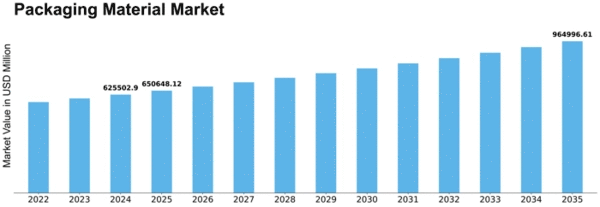

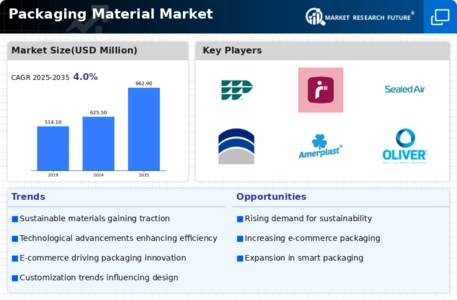
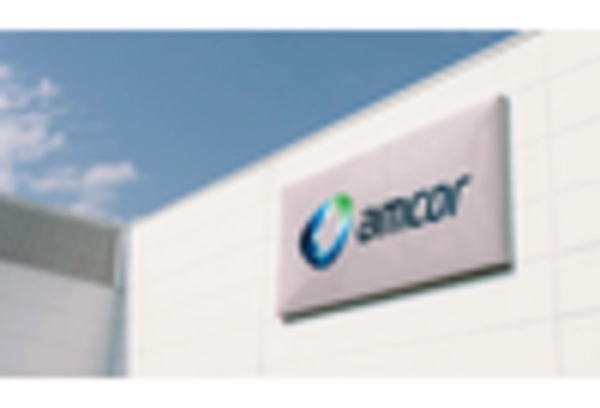
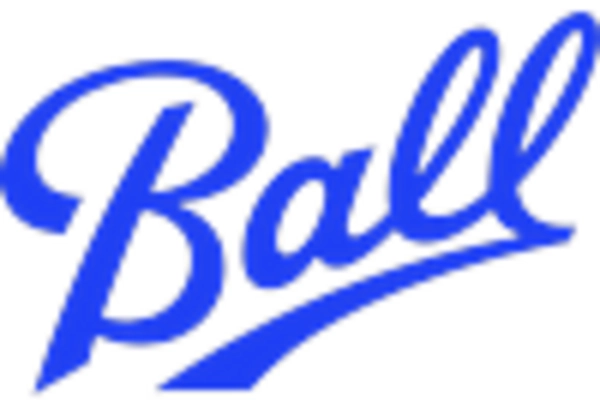
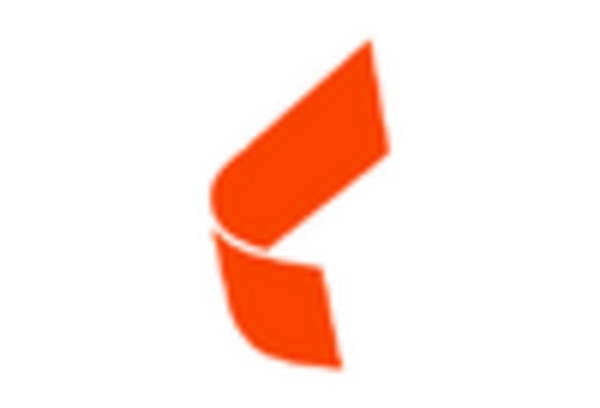
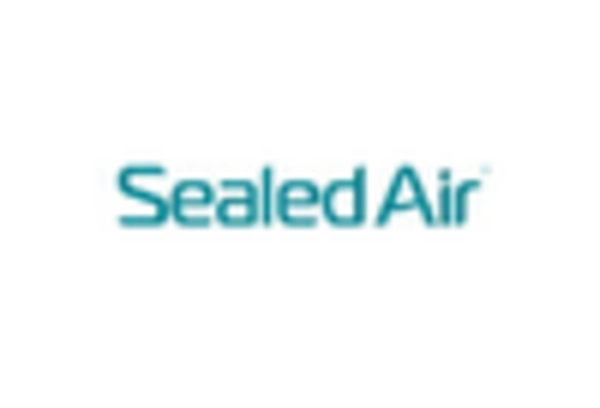
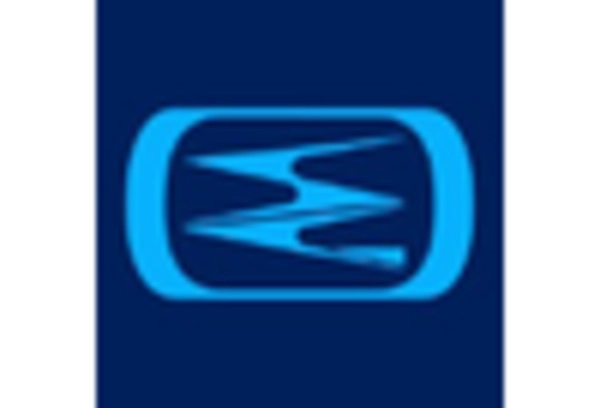
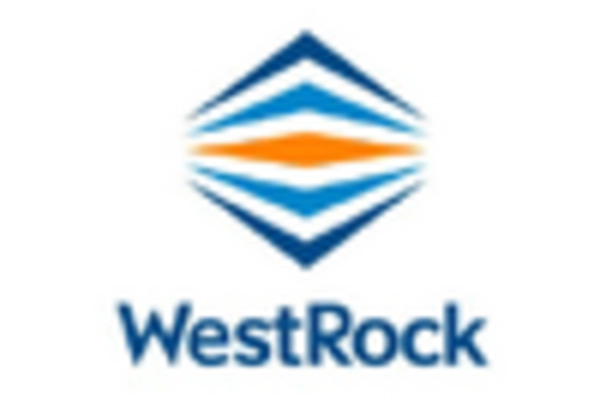









Leave a Comment